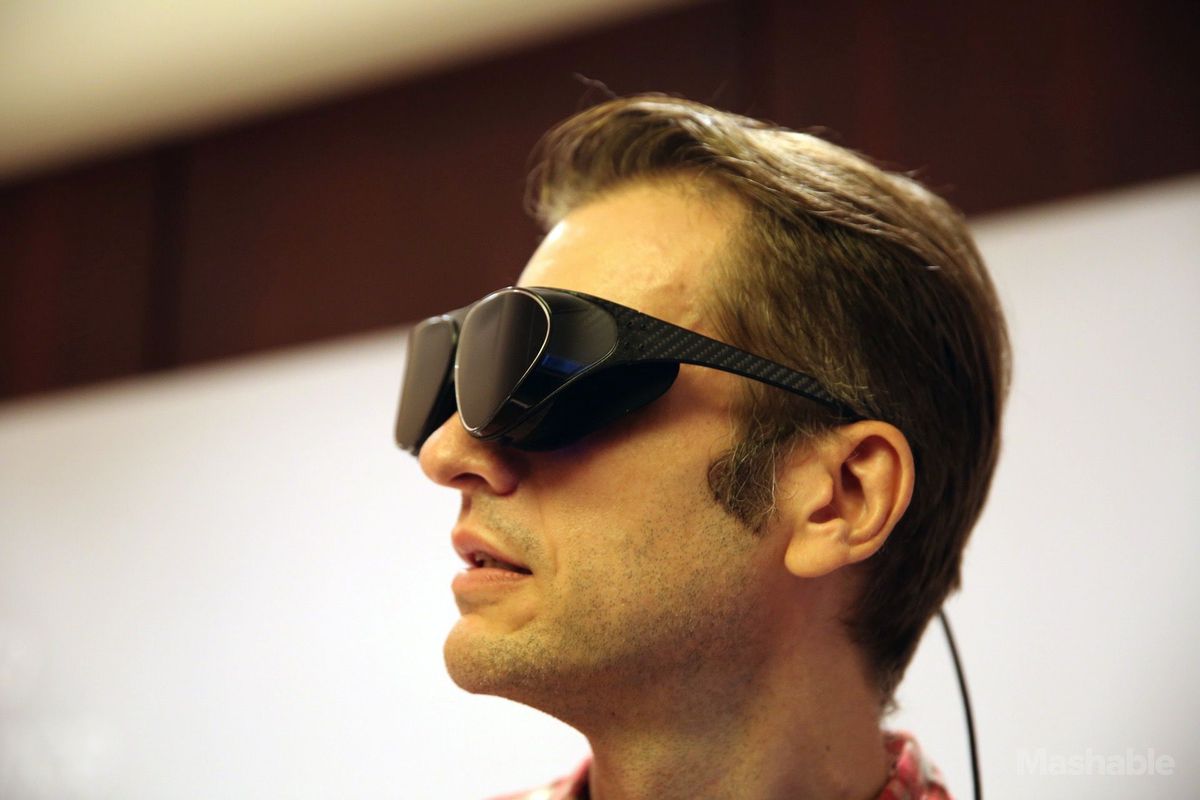

AUG 09, 2016
MashableAsia RAYMOND WONG
I had my doubts when China's Dlodlo (pronounced "dwaw dwaw") announced the V One, the world's thinnest and lightest VR headset back in April.
It sounded too good to be true. At a press event in New York on Monday, I got a chance to try the V One headset on and I have to say it's impressive. Magical, even.
SEE ALSO: VR headsets wouldn't be so nerdy if they looked like this
Looking more like an odd pair of shades, the V One is an ultra-light headset when you compare it to the distinctively bulky shape that's become the norm for VR headsets like the Oculus Rift andHTC Vive and Samsung Gear VR. It's a standalone headset, meaning you don't need a separate device — a PC or a phone — to use it (the "brains" of the gadget are in an accompanying Android-based "processing unit" that's about the size of an iPod touch).
It's made from carbon fiber and weighs only 3.1 ounces. Its lenses are only 0.68 inches thick. There are no elastic bands.
The V One is as fashionable as it is compact and pocketable. You really have to try them on for yourself to believe it.
The demo headset I tried was indeed very light and would have fit comfortably on my face if not for the nosepad, which was designed for narrower noses. It kept sliding off my face, but I was able to hold it up with my hands. A Dlodlo representative told me there will be interchangeable nose pads, but I didn't get to try them on.
Still, I was stunned by the image quality of the V One. Its 2,560 x 1,440 resolution display is sharper than any high-end VR headset I've tried, and thanks to the insanely dense pixels packed into each lens (over 800 ppi — pixels per inch — for each eye), I didn't notice the "screen door effect" that is present on most other VR headsets.
I was concerned about potential light leaking into the headset through the top, bottom and sides, but I'm pleased to say the headset has guards that shield it from unwanted light.
The refresh rate was fast; I didn't see any lag in the few VR video game demos I tried out. In one demo, I was piloting a ship using an Xbox One controller and in control of steering and firing.
The V One has a 105-degree field of view (FOV), which is wider than even Samsung's new Gear VR (101 degrees).
Cable management is also something Dlodlo hopes to solve with the V One. As I mentioned, the headset is tethered to the Dlodlo D1 processing unit, but it would obviously would be better if there . The unit contains a quad-core processor and a 3,000 mAh battery, which the company says is good for 2-3 hours of VR video playback.
The headset is also compatible with PCs and smartphones through a single cable, kind of like the LG 360 VR.
The headset will be initially sold through Kickstarter, starting at $559, which is also less than the Oculus Rift and HTC Vive.
Along with the headset, Dlodlo's planning to launch a VR app store for users to discover VR content.
I only had a brief moment to try out the V One, but I'm already sold. This is the future of VR headsets. It shames the Rift, Vive and Gear VR on size.